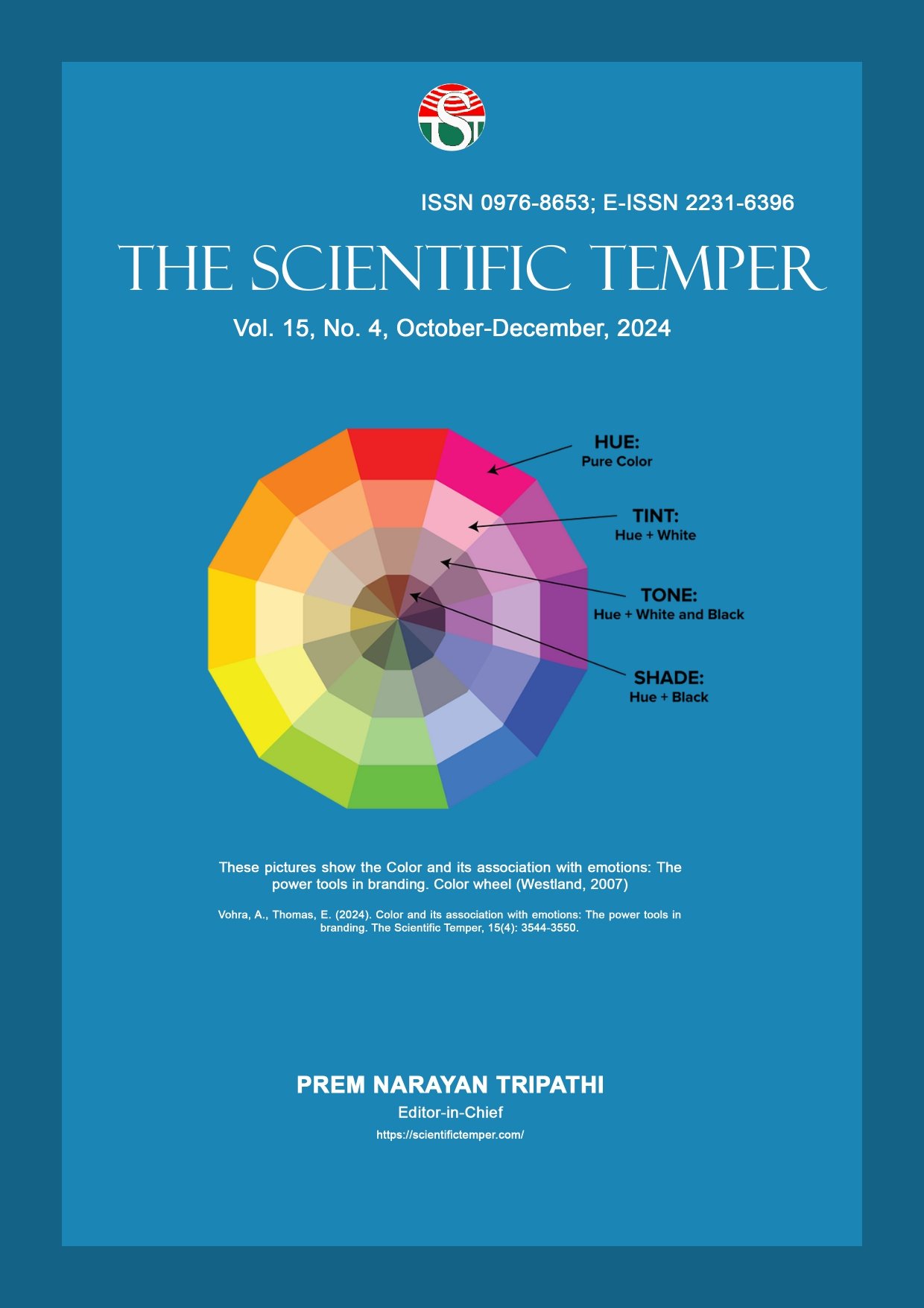Improving classification precision for medical decision systems through big data analytics application
Downloads
Published
DOI:
https://doi.org/10.58414/SCIENTIFICTEMPER.2024.15.4.28Keywords:
Medical Decision Systems, Big Data Analytics, Healthcare Data, Machine Learning, Classification AccuracyDimensions Badge
Issue
Section
License
Copyright (c) 2024 The Scientific Temper

This work is licensed under a Creative Commons Attribution-NonCommercial-ShareAlike 4.0 International License.
The rapid evolution of machine learning (ML) and big data analytics has modernized medical decision-making procedure, offering promising path for improving classification precision and ultimately, patient outcomes. This research inspects methodologies for enhancing the classification accuracy of medical decision systems by leveraging ML algorithms and big data analytics procedure. In this study, a broad evaluation of existing literature on ML applications in healthcare and medical decision-making is carried out to discover current challenges and potential areas for improvement. The research explores the integration of diverse data sources, including electronic health records (EHRs), medical imaging, genomic data, and patient-generated data, to build robust predictive models. Moreover, the research emphasizes the importance of interpretability and transparency in ML models for medical decision-making, particularly in critical healthcare settings where the rationale behind predictions is crucial. Techniques for model explainability, such as feature importance analysis and model-agnostic interpretability methods, are explored to enhance trust and adoption of ML-driven decision systems by healthcare professionals. Furthermore, the study investigates advanced ML algorithms such as deep learning, ensemble methods, and feature engineering techniques to extract meaningful patterns from large and complex medical datasets. Through experimentation with real-world medical datasets, the efficacy of these algorithms in improving classification accuracy is evaluated and compared against traditional methods. The result of this research contributes to the advancement of ML-driven medical decision systems by providing insights into strategies for improving classification accuracy, thereby facilitating more exact diagnosis, prognosis, and treatment recommendations. Ultimately, the integration of ML and big data analytics holds immense potential for revolutionizing healthcare delivery and improving patient outcomes.Abstract
How to Cite
Downloads
Similar Articles
- Anita M, Shakila S, Stochastic kernelized discriminant extreme learning machine classifier for big data predictive analytics , The Scientific Temper: Vol. 15 No. spl-1 (2024): The Scientific Temper
- Shaik Khaleel Ahamed, Neerav Nishant, Ayyakkannu Selvaraj, Nisarg Gandhewar, Srithar A, K.K.Baseer, Investigating privacy-preserving machine learning for healthcare data sharing through federated learning , The Scientific Temper: Vol. 14 No. 04 (2023): The Scientific Temper
- Jayalakshmi K., M. Prabakaran, The role of big data in transforming human resource analytics: A literature review , The Scientific Temper: Vol. 15 No. spl-1 (2024): The Scientific Temper
- V. Babydeepa, K. Sindhu, Piecewise adaptive weighted smoothing-based multivariate rosenthal correlative target projection for lung and uterus cancer prediction with big data , The Scientific Temper: Vol. 15 No. 03 (2024): The Scientific Temper
- Madhuri Prashant Pant, Jayshri Appaso Patil, Unlocking the potential of big data and analytics significance, applications in diverse domains and implementation of Apache Hadoop map/reduce for citation histogram , The Scientific Temper: Vol. 16 No. Spl-2 (2025): The Scientific Temper
- V Vijayaraj, M. Balamurugan, Monisha Oberai, Machine learning approaches to identify the data types in big data environment: An overview , The Scientific Temper: Vol. 14 No. 03 (2023): The Scientific Temper
- P S Renjeni, B Senthilkumaran, Ramalingam Sugumar, L. Jaya Singh Dhas, Gaussian kernelized transformer learning model for brain tumor risk factor identification and disease diagnosis , The Scientific Temper: Vol. 16 No. 02 (2025): The Scientific Temper
- V. Umadevi, S. Ranganathan, IoT based energy aware local approximated MapReduce fuzzy clustering for smart healthcare data transmission , The Scientific Temper: Vol. 15 No. 03 (2024): The Scientific Temper
- Pravin P. Adivarekar1, Amarnath Prabhakaran A, Sukhwinder Sharma, Divya P, Muniyandy Elangovan, Ravi Rastogi, Automated machine learning and neural architecture optimization , The Scientific Temper: Vol. 14 No. 04 (2023): The Scientific Temper
- G. Vijayalakshmi, M. V. Srinath, Student’s Academic Performance Improvement Using Adaptive Ensemble Learning Method , The Scientific Temper: Vol. 16 No. 11 (2025): The Scientific Temper
You may also start an advanced similarity search for this article.



